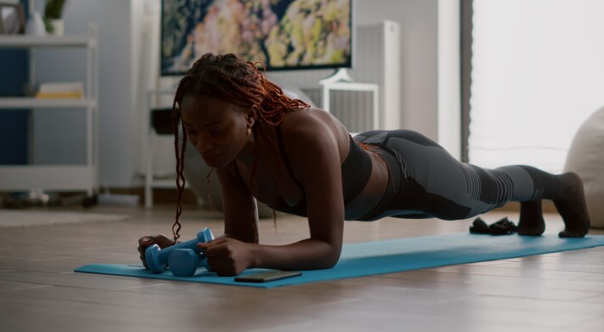Stress is a common issue that affects people of all ages and backgrounds. It can take a toll on both mental and physical health, causing a range of negative effects such as anxiety, fatigue, and insomnia. Finding effective ways to manage stress is crucial for maintaining overall well-being and quality of life.
Physical exercise is one of the best ways to relieve stress and improve overall health. Regular physical activity has been shown to lower levels of stress hormones and boost the production of endorphins, which are known to promote feelings of happiness and well-being.
It is important to note that not all exercises are equally effective for stress relief. Different types of physical activity can have varying impacts on stress levels, depending on factors such as intensity, duration, and personal preferences.
That is why it is important to find the right type of exercise for you, one that you enjoy and that you can make a part of your regular routine.
In this article, we will explore the best exercises for stress relief. From yoga and meditation to high-intensity interval training and strength training, we will take a closer look at the various types of physical activity that can help you manage stress and improve your overall health and well-being.
II. Yoga and Pilate
Yoga and Pilates are two popular forms of exercise that are known for their stress-relieving benefits. Both practices focus on physical postures, breathing techniques, and mindfulness, which can help to calm the mind and reduce stress.
Yoga is a holistic practice that originated in ancient India. It involves a combination of physical postures, breathing exercises, and meditation. The physical postures, or asana, are designed to increase strength, flexibility, and balance, while the breathing techniques and meditation help to calm the mind and reduce stress.
There is a wide variety of yoga styles to choose from, each with its own unique focus, making it easy to find the right type of yoga for your needs and preferences. Pilates is a form of exercise that focuses on improving core strength, flexibility, and posture.
It is a low-impact exercise that can be performed on a mat or with special equipment. Pilates emphasizes slow and controlled movements, which can help to reduce stress and improve mental clarity. It is a great option for those who are looking for a gentle form of exercise that can help to relieve stress and improve overall well-being.
Both yoga and Pilates can be performed in a group setting or in the comfort of your own home. They are accessible to people of all ages and fitness levels, making them a great option for anyone looking to incorporate physical activity into their stress-management routine.
In addition to reducing stress, yoga and Pilates also offer several other benefits. Regular practice of yoga has been shown to improve sleep, boost immunity, and relieve symptoms of anxiety and depression. Pilates can help to improve posture, increase muscle strength and flexibility, and enhance athletic performance.
Yoga and Pilates can also be a great way to connect with others and build a supportive community. Group classes can provide a sense of social connectedness and a shared sense of purpose, which can be especially helpful during times of stress.
When it comes to incorporating yoga or Pilates into your routine, the most important thing is to find what works best for you. Whether you prefer a more vigorous yoga practice or a gentle Pilate’s workout, the key is to find a form of exercise that you enjoy and that you can make a part of your daily routine.
So if you’re looking for an effective way to manage stress and improve your overall health, consider trying yoga or Pilates. With their many benefits and wide range of styles to choose from, these forms of exercise are sure to help you find the peace and relaxation you need to lead a happier, healthier life.
II. Cardiovascular Exercise
Cardiovascular exercise, also known as aerobic exercise, is another effective way to relieve stress and improve physical and mental health. Examples of cardiovascular exercise include running, cycling, swimming, and jumping rope.
One of the main benefits of cardiovascular exercise is that it helps to reduce levels of cortical, the stress hormone, in the body. By doing so it can help to improve mood, increase energy, and reduce feelings of anxiety and depression.
In addition to reducing stress, cardiovascular exercise can also help to improve heart health, boost immune function, and promote weight loss. Regular aerobic exercise has been shown to increase endurance, increase muscle mass, and reduce the risk of chronic diseases such as heart disease, stroke, and diabetes.
When starting a cardiovascular exercise program, it’s important to find activities that you enjoy and that you can stick to. It’s also important to start slowly and gradually increase the intensity and duration of your workouts over time. With time and persistence, you can reap the many benefits of cardiovascular exercise and enjoy a healthier, happier life.
Incorporating cardiovascular exercise into your routine can be as simple as taking a daily walk, going for a bike ride, or joining a local running group. To get the most benefit from your workouts, aim to exercise for at least 30 minutes most days of the week.
It’s also important to pay attention to your body and listen to how it feels. If you’re feeling tired or stressed, take a break or scale back the intensity of your workout. And if you’re new to exercise or have any underlying medical conditions, be sure to talk to your doctor before starting a new workout routine.
In addition to regular exercise, there are other things you can do to reduce stress and promote overall well-being. This may include eating a healthy diet, getting enough sleep, and finding healthy ways to cope with stress, such as through mindfulness, meditation, or therapy.
So whether you prefer yoga, Pilates, or cardiovascular exercise, the key is to find an activity that you enjoy and that helps you manage stress. By incorporating regular exercise into your routine, you can enjoy the many benefits of a healthier, happier life.
III. Strength Training
Strength training, also known as resistance training, is a type of exercise that involves working against resistance to build strength, power, and endurance in the muscles. This type of exercise can be done with weights, resistance bands, bodyweight exercises, or a combination of these methods.
One of the main benefits of strength training is that it can help to reduce stress and improve mental health by boosting mood and self-esteem. When you engage in strength training, your body releases endorphins, natural feel-good chemicals that can help to reduce feelings of stress and anxiety.
In addition to reducing stress, strength training can also improve physical health in a number of ways. This includes increasing muscle mass, improving bone density, and reducing the risk of chronic diseases such as heart disease, stroke, and diabetes.
To get started with strength training, it’s important to find a routine that you enjoy and that you can stick to. You may want to start with bodyweight exercises such as push-ups, squats, and lunges, or you may choose to use weights or resistance bands.
It’s also important to start slowly and gradually increase the intensity and duration of your workouts over time.
With time and consistency, you can reap the many benefits of strength training and enjoy a healthier, happier life. So whether you prefer weights, resistance bands, or bodyweight exercises, the key is to find a routine that works for you and that helps you achieve your goals.
It’s also important to consider the frequency and duration of your strength training workouts. According to the American College of Sports Medicine, adults should aim to do strength training exercises for at least two days a week, targeting all major muscle groups.
Each session should last for 8-12 repetitions of each exercise, with a break of 48 hours between strength training sessions to allow the muscles time to recover.
Additionally, it’s crucial to use proper form and technique when performing strength training exercises to avoid injury and ensure that you are getting the most out of each workout.
If you are new to strength training, it may be helpful to work with a personal trainer or fitness professional who can guide you through the proper form and technique for each exercise.
Finally, it’s important to mix up your strength training routine from time to time to prevent boredom and continue to challenge your muscles. This could mean trying new exercises, using different weights or resistance levels, or increasing the frequency or duration of your workouts.
In conclusion, strength training can be a powerful tool for reducing stress and improving both mental and physical health. Whether you’re a beginner or a seasoned fitness enthusiast, incorporating strength training into your routine can help you lead a happier, healthier life.
IV. Mindfulness and Meditation
Mindfulness and meditation are two other exercises that have been shown to be effective in reducing stress and improving overall health. Mindfulness involves focusing your attention on the present moment and becoming aware of your thoughts, feelings, and sensations.
This type of exercise can help you cultivate a sense of calm and reduce feelings of anxiety and stress. Meditation is similar to mindfulness, but often involves sitting or lying down in a quiet place and focusing your attention on a particular object, sound, or word.
This can help to quiet the mind and reduce feelings of stress and anxiety. Both mindfulness and meditation can be done anywhere and at any time, making them convenient and accessible options for reducing stress.
Additionally, both practices have been shown to have a variety of physical and mental health benefits, including improved sleep, reduced symptoms of depression, and increased feelings of happiness and well-being.
Incorporating mindfulness and meditation into your daily routine can be as simple as taking a few minutes each day to sit quietly and focus on your breath, or by downloading a meditation app or taking a class.
Whatever form of mindfulness and meditation you choose, incorporating these exercises into your routine can help you lead a happier, healthier life.
There are many different types of mindfulness and meditation practices to choose from, so it is easy to find one that works for you. Some people prefer guided meditations, where a teacher or app walks them through the practice, while others prefer to meditate on their own.
There are also many different styles of mindfulness and meditation, ranging from traditional techniques like mindfulness-based stress reduction and transcendental meditation, to more modern practices like loving-kindness meditation and body scan meditation.
Overall, incorporating mindfulness and meditation into your routine can be a simple and effective way to manage stress and improve your overall health and well-being. Whether you’re a beginner or an experienced practitioner, there is a mindfulness and meditation practice out there that is right for you.
Conclusion
In conclusion, incorporating exercise into your daily routine can be a powerful tool for stress relief. Whether it’s through yoga, Pilates, cardio, strength training, mindfulness, or meditation, there are many different types of exercises that can help you manage stress and improve your overall well-being.
Additionally, making exercise a regular part of your routine can also have long-term benefits for your mental and physical health. Regular exercise has been shown to reduce the risk of chronic diseases such as heart disease, stroke, and certain types of cancer.
It can also boost your mood, improve your sleep, increase your energy levels, and even enhance your memory and cognitive function. Exercise doesn’t have to be a chore.
In fact, it can be a fun and enjoyable activity if you find the right type of exercise for you. Whether it’s through a group fitness class, a sport, or a solo activity like running or hiking, there are many different ways to get active and enjoy the benefits of exercise.
So, if you’re looking for a way to reduce stress and improve your overall health, consider incorporating exercise into your daily routine. Whether it’s through yoga, Pilates, cardio, strength training, mindfulness, or meditation, there are many different forms of exercise that can help you manage stress and improve your well-being.
So why not give it a try and see the benefits for yourself!



